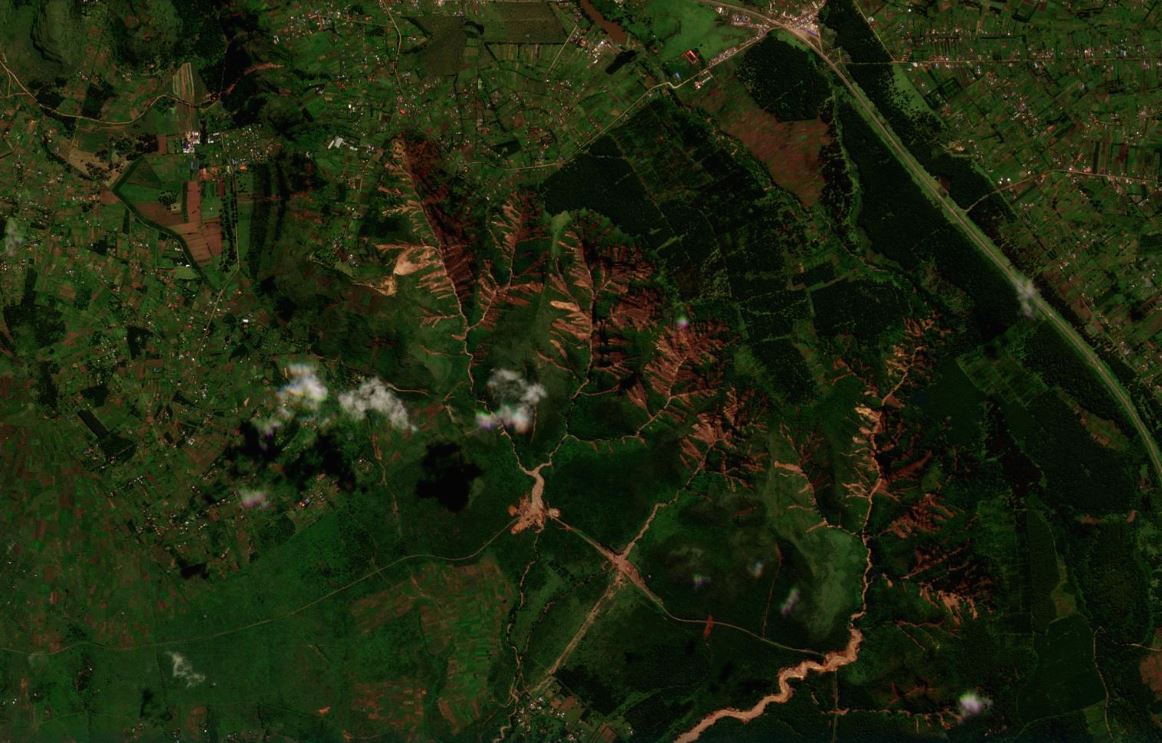Rainfall data alone can’t predict where malaria may pop up. Factoring in hydrological processes helps researchers paint a more nuanced picture of transmission.
Africa
Satellite imagery of the 29 April 2024 Mai Mahiu landslide disaster in Kenya
The Landslide Blog is written by Dave Petley, who is widely recognized as a world leader in the study and management of landslides. On 29 April 2024, a major debris flow swept through Mai Mahiu in Kenya. At least 60 people were killed, although many more bodies remain missing. It is thought that the final […]
The Mai Mahiu landslide disaster in Kenya
The Landslide Blog is written by Dave Petley, who is widely recognized as a world leader in the study and management of landslides. On 29 April 2024, a devastating debris flow swept through Mai Mahui in Kenya. The latest reports indicate that 48 people were killed and 84 people are missing. The disaster was triggered […]
Africa’s Carbon Sink Capacity Is Shrinking
A new estimate of Africa’s greenhouse gas budget from 2010 to 2019 shows increasing emissions from cropland expansion, livestock, and fossil fuel use—meaning the continent may have transitioned from an overall carbon sink to a slight carbon source.
A transnational, valley-blocking landslide in Africa
The Landslide Blog is written by Dave Petley, who is widely recognized as a world leader in the study and management of landslides. On 23 February 2024, a large valley-blocking landslide was triggered by heavy rainfall in the Ruzizi Valley, to the south of the city of Bukavu, which is in the Democratic Republic of […]
ارتفاع درجة حرارة المحيطات يمهد الطريق لحدوث موجات جفاف خطيرة، ولكن يمكن التنبؤ بها، في شرق أفريقيا
اكتشف العلماء رابطة بين التدرجات الحرارية في المحيط الهادئ وبين موجات الجفاف الفتاكة والتي يمكن التنبؤ بها في شرق أفريقيا.
Using Machine Learning to Reconstruct Cloud-Obscured Dust Plumes
Satellite-observed dust plumes from North Africa are frequently obscured by clouds, but a new study uses machine learning to reconstruct dust patterns, demonstrating a new way to validate dust forecasts.
Planet Labs imagery of the Mount Hanang debris flows in Tanzania
On 21 December 2023, Planet Labs captured imagery of the Mount Hanang debris flows in Tanzania, highlighting that many failures coalesced into channelised debris flows.
Ostrich Eggshells Trace Namaqualand’s Ancient Rain
The plant-based nitrogen eaten by ostriches and stored in their eggshells was measured by researchers 20,000 years later.
Katesh and Gendabi: the 2 – 3 December 2023 channelised debris flows in Tanzania
The Landslide Blog is written by Dave Petley, who is widely recognized as a world leader in the study and management of landslides. On 2 – 3 December 2023, very heavy rainfall struck the Northern Manyara region in Tanzania in Africa, triggering damaging landslides. Worst affected appears to be the area of Mount Hanang, a […]










